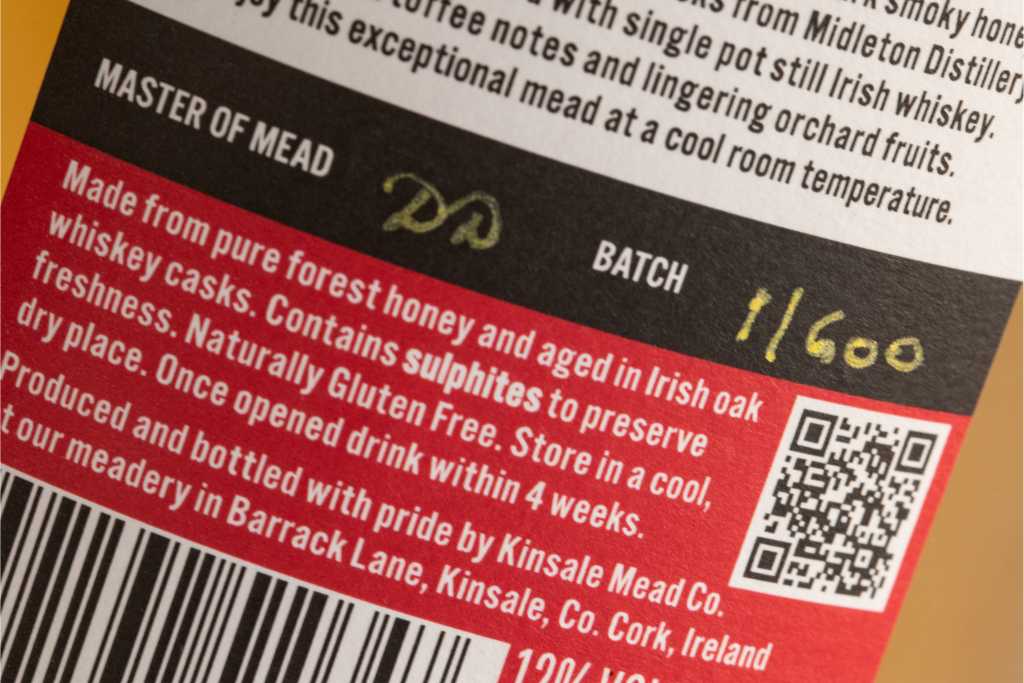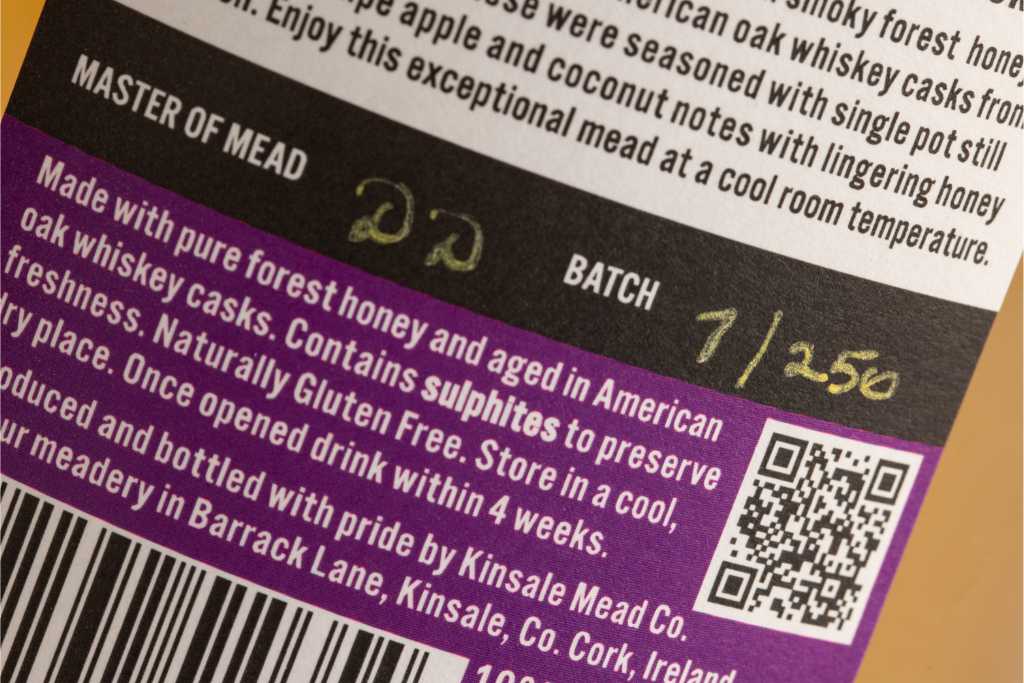The next generation of QR codes launch in Ireland
Apr 9, 2024,
by Maria Svejdar - Category: Barcodes
GS1 powered QR codes with Digital Link have launched in Ireland.
Kinsale Mead becomes the first GS1 Ireland member to unlock the power of these next generation codes in Ireland.

One of the outcomes of the the COVID restrictions was that we as consumers, have become increasingly familiar with scanning QR codes to access information, to order from a menu or to look up credentials.
Today, those possibilities expanded even further with the ability to combine a product’s unique identifier (the GTIN or barcode number) with one, or more, links to additional sources of online information.
This is creating infinite new possibilities for brands, retailers and others to connect and engage with their customers; an opportunity Kate Dempsey of Kinsale Mead has already taken first-mover advantage of.
About Kinsale Mead and their GS1 QR code innovation
Kinsale Mead is a multi-award-winning meadery located in Kinsale, Co. Cork, which was founded by husband-and-wife team Denis and Kate Dempsey in 2016 to reawaken the ancient art of mead-making in Ireland. The business has grown steadily and today offers a range of mead products, ranging from Atlantic Dry Mead to Wild Red Mead, and a unique range of cask matured meads. The lastest Award win for Kinsale Mead was at the Guaranteed Irish Awards where they took home the Best Drink Producer or Supplier Award.

In fact, it was the Gold Award win for the Wild Red Mead at the Blas na hÉireann Irish Foods Awards in Dingle in Sept 2023 that sparked the initial conversation between Kate from Kinsale Mead and Maria from GS1 Ireland, about the possibilities for the new QR codes.
Last Autumn Kate was in the process of updating the product labels for her Mead range, so it was a timely point in the design process to set up the GS1 Digital Links for each product and to create the new multi-use QR codes.

These QR codes are different to the average marketing QR code as they incorporate the unique barcode number (GTIN) for each product, and can be used to re-direct the user to one or more sources of information. They also future-proof Kinsale Mead’s adoption of barcode technology as a migration towards the use of 2D barcodes for retail point-of-sale scanning is underway.
Kinsale Mead joined GS1 Ireland in 2017 and today has seven products published to the GS1 Global Registry for buyers, retailers and consumers to access and view via the Verified by GS1 service. Additionally, with the inclusion of the GS1 Digital Link data format in the QR code, Kinsale Mead have set up their first links in the GS1 Links Registry to bring consumers and other interested parties directly to a dedicated webpage for each product. GS1 Digital Links can be updated and amended by producers without impacting the QR code printed on the product packaging.
The new GS1 QR codes are currently being rolled out across the Kinsale Mead range of products and the first product, Wild Forest Honey Mead has landed on retail shelves. The Dark Forest Honey Mead is available directly from the meadery.

Kinsale Mead offers a range of mead products, ranging from Atlantic Dry Mead to Wild Red Mead, and a unique range of cask matured meads.
Why should you consider a 2D barcode?
QR codes are one of a family of 2D or “two dimensional” barcodes, that includes GS1 Data Matrix codes. Data Matrix barcodes are already widely used throughout the medical device and pharmaceutical sectors to capture and share specific product data, such as batch, lot and expiry date, alongside the product’s GTIN. These codes are set to see increased use across the retail and consumer goods industries in the coming years as businesses adopt new ways to meet the data challenges presented by the need for greater sustainability and transparency, better waste management, and enhanced product data accessibility, in line with consumer and regulatory demands.
Apart from providing additional functionality, 2D codes when printed are typically smaller than the standard EAN 13 barcode printed on the majority of packs today. With space on packaging under ever-increasing pressure, the option to transition to a smaller barcode format that does more is of real value to everyone across the supply chain. Two-dimensional or 2D barcodes, such as QR codes, enable effective and more efficient inventory management processes, traceability programmes and sustainability initiatives.
Sunrise 2027 for two-dimensional barcodes at the retail point of sale
GS1 Global and its board member companies have set the ambitious goal of having retail systems capable of scanning and processing the data from 2D barcodes by the end of 2027. It is estimated that by the end of 2023 alone, over 50% of retailers globally may already be capable of scanning 2D barcodes.
This transition to 2D barcodes and the benefits it will unlock for all, will undoubtedly be one of the biggest retail technology transformations since the introduction of the original linear barcode
over 50 years ago. GS1 is supporting businesses around the world to maximise the value from this digital revolution. Are you ready?
The Power of QR codes
GS1-powered QR codes, which combine a URL and a product’s barcode number, enable everyone, from consumers and distributors to retailers and regulators, to access varying levels of information. From 2027, retail point-of-sale scanners will need to be capable of scanning and processing data from 2D or “two dimensional” barcodes such as GS1 Data Matrix codes and
QR codes.
Are you interested in activating your GS1 QR code?
Contact the GS1 Ireland team today for information on how to get started or visit gs1ie.org/digital-link
One barcode scan, limitless possibilities.
Tags: retail, barcode, QR, codes